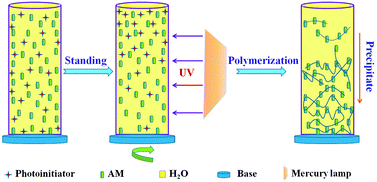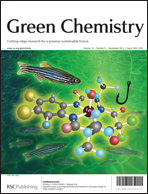Three water-soluble polysiloxane benzophenone photoinitiators (W-Si-HBP2-A/B/C) with various silicon content used for preparing a gradient polymer were synthesized based on the traditional photoinitiator 4-hydroxybenzophenone (HBP) and aminopolysiloxane. The structures were confirmed by proton nuclear magnetic resonance (1H NMR), and gel permeation chromatography (GPC). The water solubility of the photoinitiators, the effect of the silicon content on their triplet state lifetimes and photopolymerization property and the self-floating ability in the water system, and the internal connection between the surface morphology and property of the gradient polymer and film initiated by the photoinitiators were investigated. All three photoinitiators showed relatively good solubility in water, and longer triplet lifetimes and a smaller rate constant than HBP. It is found that the photoinitiator with the highest silicon content had the best floating capability due to lower surface tension and energy of polysiloxane. By using this photoinitiator, the gradient polymer with a significant molecular weight gradient was obtained. In addition, the polysiloxane-based photoinitiators can decrease the dispersion surface energy of the gradient polymer, and the increase of photoinitiator content can change the microstructure of the gradient polymer film. The new green method for preparing gradient polymeric material by using the polymerization technology and the water-soluble polysiloxane-based photoinitiators may have potential applications in the green chemical industry.

You have access to this article
 Please wait while we load your content...
Something went wrong. Try again?
Please wait while we load your content...
Something went wrong. Try again?


 Please wait while we load your content...
Please wait while we load your content...